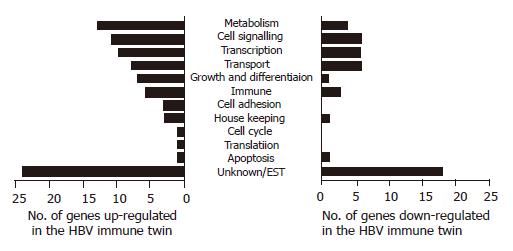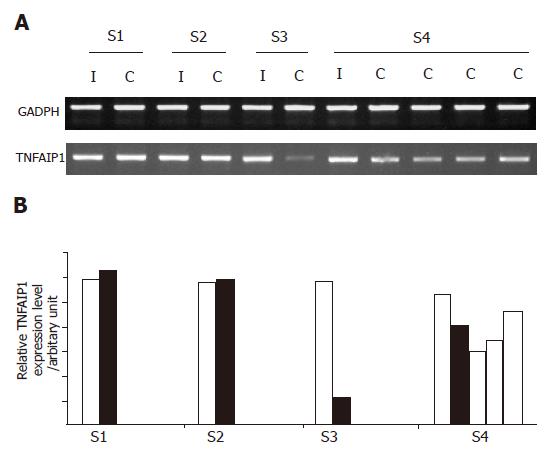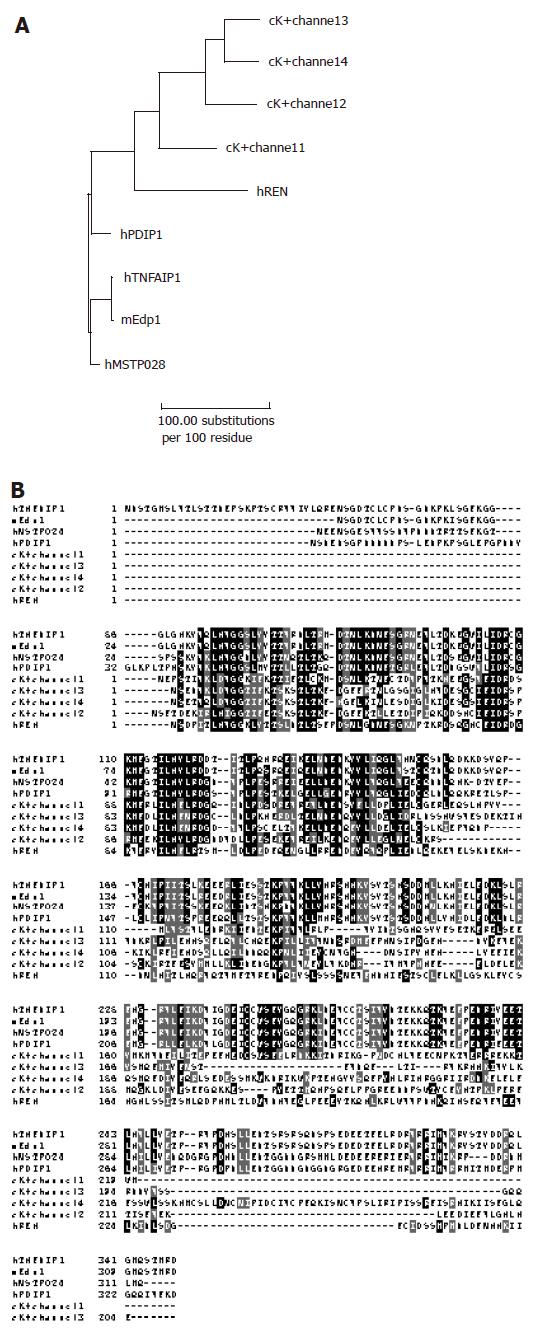Copyright
©2005 Baishideng Publishing Group Inc.
World J Gastroenterol. Dec 28, 2005; 11(48): 7564-7568
Published online Dec 28, 2005. doi: 10.3748/wjg.v11.i48.7564
Published online Dec 28, 2005. doi: 10.3748/wjg.v11.i48.7564
Figure 1 Number of genes upregulated or downregulated in the immune twin compared to the HBV carrier twin.
PBMCs from two HBV infected twins with different disease outcomes were analyzed for gene expression using DNA microarray. Eighty-eight genes were identified as upregulated and 46 downregulated. They were further divided into 12 groups based on their presumed functions.
Figure 2 Expression levels of TNF-αIP1 gene in HBV-infected siblings with different disease outcomes.
A: RT-PCR analysis of TNF-αIP1 in four sibling pairs; B: Fold changes of band intensity of TNF-αIP1 in different sibling groups. Open bar: HBV immune patients; black or patterned bars: HBV carrier; S1: sibling group 1; S2: sibling group 2; S3: sibling group 3; S4: sibling group 4.
Figure 3 TNF-αIP1 shares significant homology with some human, mouse, and C elegan proteins, having common K+ channel tetramerization/POZ domain.
A: Phylogenetic analysis of evolutionary distance of the protein sequences. The protein sequences were analyzed by the Growtree program provided by the GCG package. Kimura distance was adopted as the distance correction method. B: Amino acid sequence alignment of TNF-αIP1 (A41784) with mouse Edp1 protein (AAC78826), human MSTP028 protein (NP_114160), PDIP1 (AAL14962), human REN protein (XP_208568), and four C elegan K+ channel family members and with highest homology to TNF-αIP1 (NP_499312, NP_494320, NP_494476 and NP_494315). Black line: K+ channel tetramerization/POZ domain.
- Citation: Lin MC, Lee NP, Zheng N, Yang PH, Wong OG, Kung HF, Hui CK, Luk JM, Lau GKK. Tumor necrosis factor-α-induced protein 1 and immunity to hepatitis B virus. World J Gastroenterol 2005; 11(48): 7564-7568
- URL: https://www.wjgnet.com/1007-9327/full/v11/i48/7564.htm
- DOI: https://dx.doi.org/10.3748/wjg.v11.i48.7564











